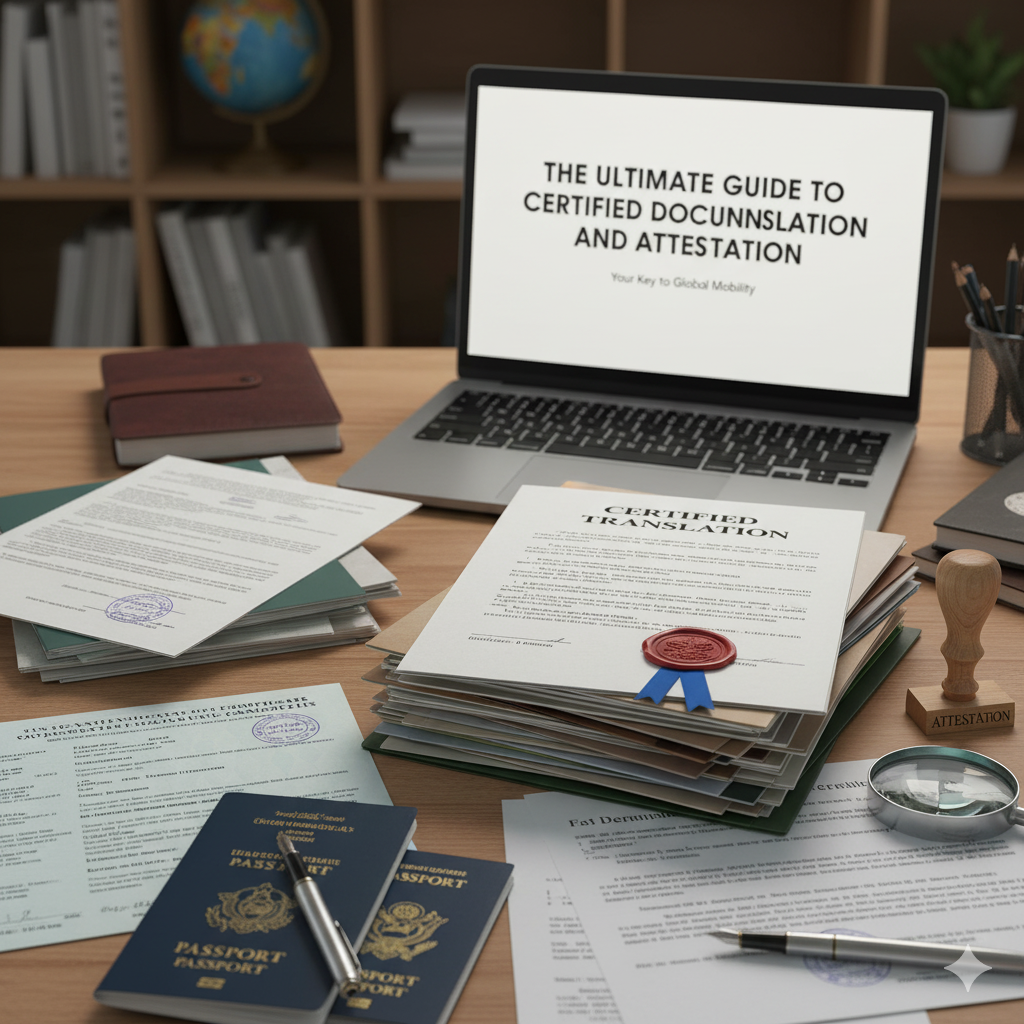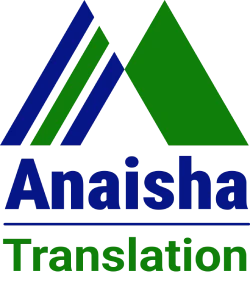The Ultimate Guide to Certified Document Translation and Attestation

In our interconnected world of 2025, the borders on the map are becoming increasingly fluid for our ambitions. Whether you’re applying to a university in Canada, accepting a job in the UAE, or registering a marriage in the UK, your journey will inevitably involve one critical step: preparing your official documents. This is where the often-confusing world of certified translation and attestation comes in.
This guide will demystify the entire process, breaking it down into simple, actionable steps. Consider this your roadmap to ensuring your most important documents are universally accepted, wherever your dreams take you.
Part 1: What is Certified Document Translation?
It’s easy to think that any translation will do, but when dealing with official bodies, that’s a critical mistake.
A Certified Translation is more than just converting words from one language to another. It is a formal process where a professional translator or a translation agency provides a signed statement, or a “Certificate of Accuracy,” declaring that the translation is a complete and accurate representation of the original document. This certification adds a layer of legal validity that governments, universities, and immigration authorities require.
When Do You Need Certified Translation?
Immigration & Visa Applications: Birth certificates, marriage certificates, police clearance records.
Higher Education Abroad: Academic transcripts, diplomas, and degree certificates.
Legal Proceedings: Court documents, affidavits, and legal contracts.
International Business: Financial statements, articles of incorporation, and patents.
Part 2: Demystifying Document Attestation
If certification vouches for the translation’s accuracy, attestation vouches for the document’s authenticity. It is a layered process of verification, where a chain of official seals and signatures confirms that the document is genuine and legitimate.
Think of it as a series of official handshakes. Each stamp, from a local notary to a national ministry, confirms the validity of the previous one. Here are the typical layers involved:
State Level Attestation: This is the first step. For educational documents, this is often done by the Human Resource Development (HRD) department of the respective state. For personal documents, it might be the Home Department or General Administration Department (GAD).
Ministry of External Affairs (MEA) Attestation: Once the state has verified the document, the MEA of the Government of India adds its stamp. This confirms the document is authentic at a national level.
Embassy Attestation: This is the final step for many countries. The embassy of the destination country, located in India, will apply its final seal, confirming the document is valid for use in their nation.
The Apostille: A Simpler Alternative
For countries that are part of the Hague Convention (over 120 members, including the USA, UK, Australia, and most of Europe), the process is simplified. Instead of a multi-step Embassy Attestation, a single sticker called an Apostille from the MEA is sufficient. An Apostille-stamped document is legally valid in all member countries.
Key Takeaway:
Apostille: For Hague Convention countries.
Embassy Attestation: For non-Hague Convention countries (e.g., UAE, Qatar, Kuwait).
Part 3: The Process from Start to Finish
Let’s walk through a common example: getting your university degree attested for a work visa in a non-Hague country.
Identify Requirements: First, confirm the exact requirements of the destination country’s embassy. Do they need the original or a copy translated?
Get Certified Translation: If your degree is not in the official language of the destination country, get it translated by a certified professional. The translation and the original document will now move through the process together.
State HRD Attestation: Submit the original degree to the HRD department of the state where the university is located.
MEA Attestation: Once HRD verification is complete, the document goes to the Ministry of External Affairs in New Delhi for their stamp.
Final Embassy Attestation: The MEA-attested document is then submitted to the destination country’s embassy for their final seal of approval.
Your document is now fully translated, certified, and attested for official use.
Part 4: Common Pitfalls to Avoid
Using a Non-Professional Translator: A simple translation app or a non-certified freelancer will lead to immediate rejection by official authorities.
Underestimating Timelines: The attestation process involves multiple government bodies and can take several weeks, sometimes even months. Start well in advance of your deadlines.
Damaging Original Documents: Lamination or minor damage can invalidate a document. Handle your originals with extreme care.
Incorrect Process: Getting an Apostille for a country that requires Embassy Attestation (or vice-versa) will render the document useless. Always verify the specific requirements first.
Why Partnering with a Professional Service is Your Best Strategy
Navigating this bureaucratic maze alone is time-consuming and fraught with risk. This is why professional translation and attestation services are invaluable. Expert agencies, especially those with a local presence in cities like Hyderabad, act as your guide.
They offer:
Expertise: They know the precise requirements for every country and document type.
Speed: They have established processes and relationships to expedite the workflow.
Security: They ensure your original documents are handled securely and returned safely.
Peace of Mind: They manage the entire end-to-end process, from translation to the final embassy stamp, saving you from immense stress and potential errors.
Conclusion
Certified translation and attestation are the official language of global mobility. While the process may seem complex, understanding its structure is the first step toward a successful outcome. By recognizing the difference between translation and attestation, knowing the correct procedural path for your documents, and planning ahead, you can confidently take the next step in your international journey.
Contact Us Today
- +91 - 9100392160
- info@anatranslation.com
- 4-6-71, Esamia Bazar, Koti, Hyderabad- 500027, Telengana
